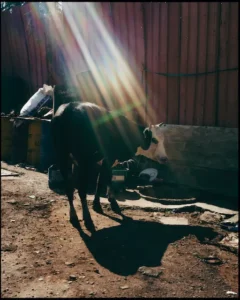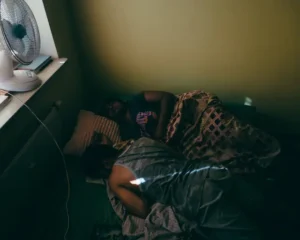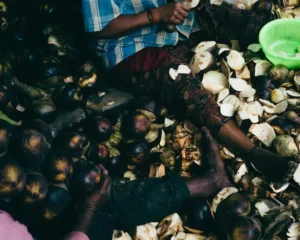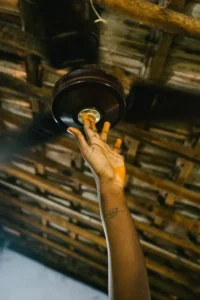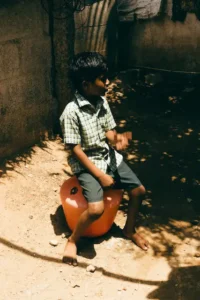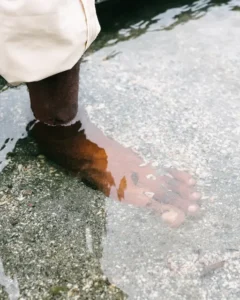As a person who grew up in Tamil Nadu, India, and has firsthand experience of the profound effects of climate change, my relationship to the topic of heat is deeply personal and rooted in the realities of my community. The theme of heat, visuality, and the climate crisis resonates strongly with my lived experiences, and I am committed to exploring and documenting its impact through a critical and ecological photographic practice with a slight sense of mockery.
Having recently moved to the UK for my master’s degree, I have become acutely aware of the stark disparity in how climate change is perceived. In the West, climate change is often discussed in a passive voice, with the privilege and luxury of time to complain about the weather. However, growing up in a middle-class family in Tamil Nadu, India, my experience of climate change was far from passive.
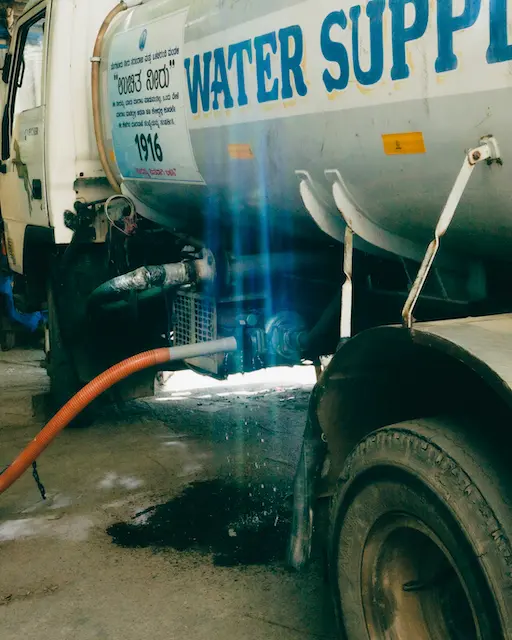
In Tamil Nadu, the consequences of rising global temperatures are acutely felt. I vividly remember the water crisis in Chennai, where the water levels in the city’s main reservoirs reached their lowest point in seven decades, with only 1.3% of the total capacity remaining. This drought, ranking as the fifth lowest recorded in 74 years, brought unimaginable challenges to the city. In my own home, we had to adapt by storing water in large buckets and tanks, converting our dining room into a makeshift storage space. The luxury of showers and baths for relaxation was only something we saw in movies, as we cherished the privilege of having just two buckets of water allocated to us on Sundays.
This drought, ranking as the fifth lowest recorded in 74 years, brought unimaginable challenges to the city. In my own home, we had to adapt by storing water in large buckets and tanks, converting our dining room into a makeshift storage space. The luxury of showers and baths for relaxation was only something we saw in movies, as we cherished the privilege of having just two buckets of water allocated to us on Sundays.
I recall the planned power cuts during scorching summers, with neighbouring buildings and shops continuing to function while we endured stifling heat on the other side of the lane. To combat the boiling nights, we played shadow games with our “emergency light”, relishing the moments when our well-behaved behaviour earned us the privilege of using the small fan that was attached to it. The sound of celebration echoing through the neighbourhood marked the return of electricity, a joyful reminder of the preciousness of basic amenities.
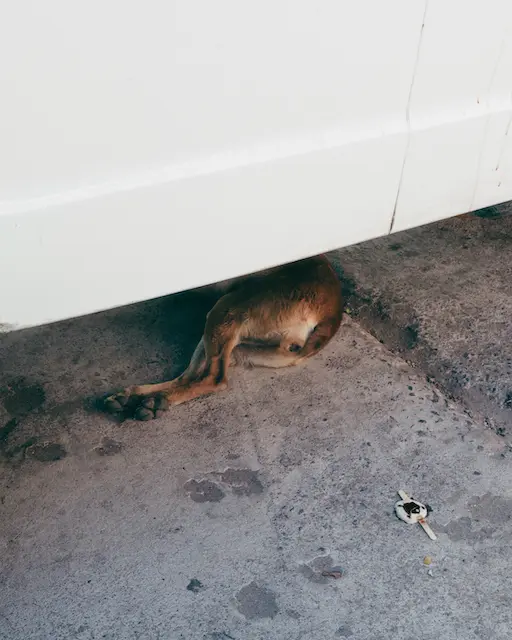
Living there, I have witnessed the devastating impact of various climate-related disasters, from tsunamis to floods and droughts.
The droughts, in particular, have led to the drying of wetlands, disrupting the habitat of migratory birds that are a kilometre away from my home. In a country with three seasons—hot, hotter, and hottest–clothes dry crisp like chips, rendering hair dryers unnecessary.
This explains the overall irritation in the air, angry honkers of motorists, and weariness of shopkeepers. The constant irritation and heat render pleasantries like “please” inconsequential.
As a resource-starved country due to our colonial past, we are left with a broken infrastructure. But how the West views us is quite black and white. Like it is impossible for life to happen. Yet, we have become so accustomed to injustice that we have learned to accept the system and thrive. So numb to misery that we all know that facing the calamities with it full gravity will crush us. We have been forced to cope. So good at “coping” that we almost don’t recognise the heat, and complain like Londoners.
Yet, we have become so accustomed to injustice that we have learned to accept the system and thrive. So numb to misery that we all know that facing the calamities with it full gravity will crush us.
However, life continues amidst these daily calamities. Through this project, I aim to explore how communities involved in fashion textiles, manufacturing, and other industries in Tamil Nadu are coping with the effects of climate change, despite contributing the least to its causes. I want to capture images that reflect my lived experience, showcasing how we constantly find makeshift solutions to combat the heat, and how we coexist with the non-human animals of Tamil Nadu.
However, life continues amidst these daily calamities. Through this project, I aim to explore how communities involved in fashion textiles, manufacturing, and other industries in Tamil Nadu are coping with the effects of climate change, despite contributing the least to its causes. I want to capture images that reflect my lived experience, showcasing how we constantly find makeshift solutions to combat the heat, and how we coexist with the non-human animals of Tamil Nadu.

